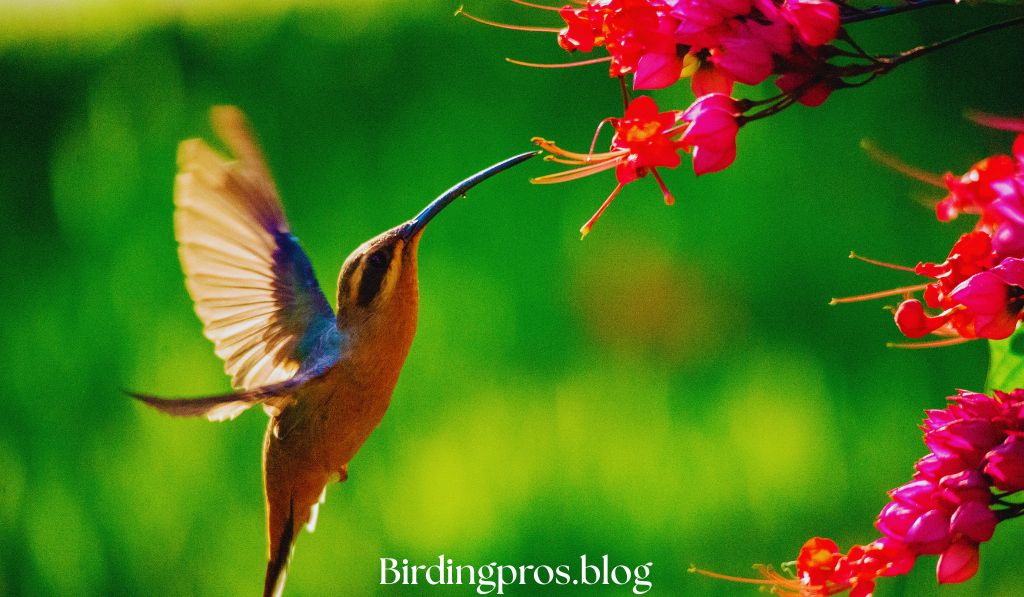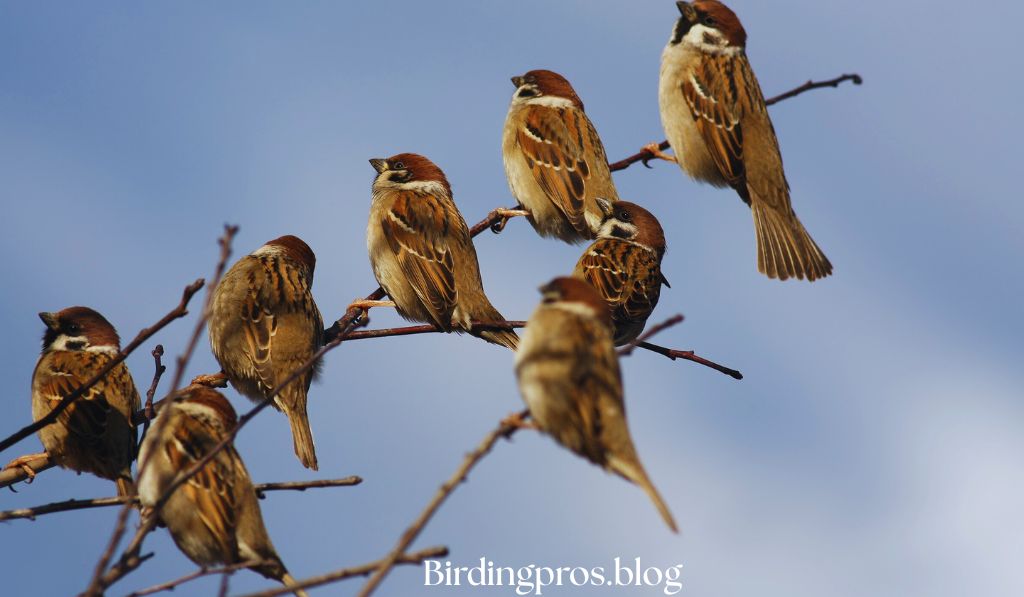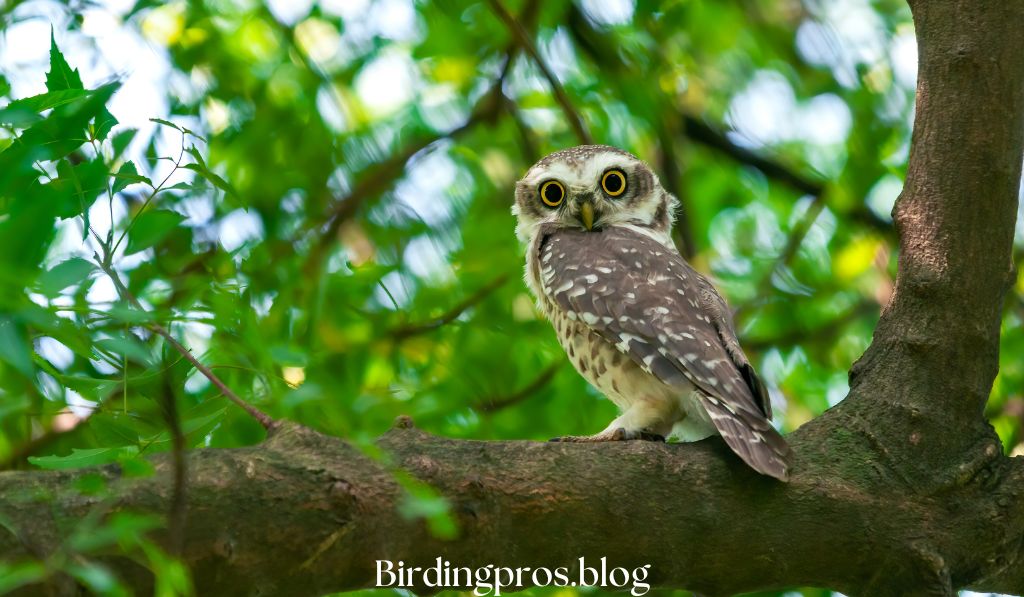Climate exchange poses a large risk to bird populations worldwide, disrupting their habitats, migration styles, and behaviors.
As international temperatures upward push and weather patterns become an increasing number of unpredictable, birds face exceptional demanding situations to their survival.
Conservation efforts are vital for keeping avian biodiversity in the face of those environmental adjustments.
Table of Contents
ToggleUnderstanding Climate Change and Its Effects on Avian Life

Climate alternate refers to prolonged-term shifts in temperature and climate patterns, especially resulting from human sports activities together with burning fossil fuels.
These changes are going on at a rate that makes it hard for plenty species, alongside birds, to comply glaringly.
The Science Behind Climate Change
Rising worldwide temperatures, changing precipitation styles, and increasing frequency of severe weather occasions are all tendencies of weather change.
These environmental shifts have always-raining consequences for ecosystems internationally, with birds being mainly susceptible because of their specialized versions and behaviors.
Why Birds Are Important Indicators of Environmental Health
Birds characteristic outstanding bioindicators, reflecting the overall fitness of our ecosystems. Their sensitivity to environmental modifications makes them early warning structures for broader ecological problems.
When populations decline, it often alerts deeper troubles inner their habitats that might eventually have an impact on different species, which incorporates humans.
Habitat Transformation Due to Climate Change

One of the biggest big effects of weather trade on birds is the transformation in their habitats.
As temperatures upward push and precipitation patterns shift, the landscapes that birds rely upon for survival are converting dramatically.
Shifting Geographic Distributions
Climate change is forcing many species to relocate as their conventional habitats end up incorrect.
Studies display that numerous species are moving poleward or to better elevations trying to find cooler temperatures and familiar conditions.
This geographic shift can create new demanding situations, which includes competition with mounted species and variants to sudden predators.
Forest Habitat Changes
Forested regions, which characteristic essential habitats for limitless bird species, are experiencing high-quality changes due to climate exchange.
Drought conditions, growing temperatures, and changing fireplace regimes are changing wooded area composition and shape, affecting the provision of nesting net sites, meals property, and safety from predators for forest-dwelling birds.
Wetland and Coastal Habitat Loss
Wetlands and coastal regions, essential for plenty of waterbirds and migratory species, are especially liable to climate alternate influences.
Rising sea levels threaten to inundate coastal nesting web sites, at the same time as altered precipitation patterns affect the hydrology of wetlands.
These adjustments can lessen appropriate breeding habitat and diminish food availability for birds depending on those ecosystems.
Disruptions to Migration Patterns
Migration is an incredible model that lets birds take advantage of seasonal sources across massive distances. Climate exchange is disrupting this carefully timed adventure in more than one approach.
Timing Mismatches with Food Sources
Climate trade has introduced phenological mismatches among birds’ migration schedules and the supply of their meals belongings.
Many birds time their migrations based totally mostly on day period but arrive at breeding grounds to discover that their meal assets—together with bugs or flowering plant life—have already peaked because of earlier spring warming, growing an unstable disconnect.
Alterations to Traditional Migration Routes
Climate change is forcing birds to alter their migration routes as appropriate stopover web sites disappear or shift vicinity.
These modifications can boom energy expenditure all through migration, probably reducing survival costs and breeding fulfillment.
Changes in Migration Distance and Timing
Some bird species are shortening their migration distances or even turning into residents in regions wherein they formerly migrated from, at the identical time as others are delaying departures or advancing arrivals in reaction to changing seasonal patterns.
These adjustments constitute huge behavioral modifications that may have lengthy-time period implications for species survival.
Impacts on Breeding Success and Reproduction
Climate change notably affects the reproductive fulfillment of birds, doubtlessly threatening the prolonged-term viability of many species.
Earlier Breeding Seasons
Warmer spring temperatures have prompted many hen species to begin breeding earlier in the year.
While this can help them align with in advance meals availability in some instances, it also exposes eggs and nestlings to capacity late frosts or spring storms, growing the chance of reproductive failure.
Reduced Nesting Success
Extreme climate activities inclusive of heatwaves, storms, and flooding—all predicted to boom with weather exchange—can without delay harm nests, kill eggs or nestlings, or create situations that make a successful breeding no longer feasible.
These sports may also have devastating consequences on neighborhood chook populations, especially for species that nest in prone locations.
Changes in Clutch Size and Breeding Frequency
Some birds are adapting to weather trade with the useful resource of changing their reproductive techniques, which encompass modifications in capture period (style of eggs laid) or breeding frequency.
While these versions may additionally assist birds reply to converting conditions, they’ll no longer be sufficient to keep populace levels within the face of rapid environmental exchange.
Behavioral Adaptations to Changing Climate

Birds are displaying brilliant behavioral flexibility in reaction to climate change, even though those permutations might not be enough to make certain lengthy-time period survival for all species.
Shifts in Feeding Behaviors
Climate exchange is changing the distribution and abundance of meal assets for birds. In reaction, many species are converting their foraging strategies, increasing their diets, or changing feeding times to adapt to new situations.
These behavioral shifts can assist birds persist in changing environments but can also moreover have limits.
Altered Nesting and Territorial Behaviors
Changes in habitat first-rate and availability because of weather change are influencing birds’ nesting behaviors and territorial protection strategies.
Some species are selecting one of a kind nesting sites or materials, at the same time as others are adjusting their territorial obstacles in response to changing property.
Modifications to Daily Activity Patterns
Rising temperatures are affecting birds’ each day’s workout routines, with many species changing their activity styles to avoid the maximum up to date additives of the day.
These behavioral versions can assist birds deal with warmness pressure but can also additionally lessen their familiar foraging time and overall performance.
Case Studies: Birds at the Front Lines of Climate Change
Examining unique examples facilitates the concrete effects of climate change on specific hen species and ecosystems.
Arctic Seabirds: Facing Rapid Change

Arctic areas are warming faster than the worldwide common, developing in particular immoderate challenges for seabirds that depend on those ecosystems.
Species just like the Thick-billed Murre and Black-legged Kittiwake are experiencing modifications in sea ice styles, transferring prey distributions, and growing opposition, essential to breeding disasters and population declines in lots of regions.
Migratory Songbirds: A Journey Through Change

Long-distance migratory songbirds, along with the Wood Thrush and Blackpoll Warbler, need to navigate more than one converting ecosystem at some stage in their annual migrations.
Climate trade impacts these birds at each diploma of their adventure, from breeding grounds to wintering areas, making them especially vulnerable to populace declines.
Hawaiian Forest Birds: Island Vulnerability

Endemic Hawaiian forest birds face precise threats from weather alternate. Rising temperatures permit mosquitoes wearing avian malaria to acquire higher elevations, threatening birds that haven’t any natural immunity to this sickness.
Combined with habitat loss and invasive species, weather exchange may additionally want to push masses of those particular birds closer to extinction.
Waterbirds: Adapting to Changing Wetlands

Wetland-based species like geese, herons, and shorebirds need to conform to dramatic adjustments of their habitats because of altered precipitation styles and water degrees.
While a few adaptable species may additionally locate new possibilities, specialised waterbirds might also struggle to find suitable habitat as their conventional wetlands remodel.
Conservation Strategies in a Changing Climate
Effective conservation inside the face of weather exchange requires modern tactics and collaboration throughout disciplines and regions.
Creating Climate-Resilient Protected Areas
Conservation efforts are increasingly more centered on putting in place networks of protected regions which could offer refuge for birds under changing climate situations.
These regions ought to encompass diverse habitats, elevation gradients, and connectivity corridors that permit for species movement as situations trade.
Habitat Restoration and Management
Restoring degraded habitats and managing gift conservation regions with climate trade in thought can assist birds with the resources they want to comply with.
This may additionally encompass practices together with controlled burning, invasive species management, and hydrological recovery tailored to projected future situations.
Reducing Non-Climate Stressors
Minimizing distinct threats to birds, collectively with habitat destruction, pollution, and invasive species, can increase their resilience to weather trade effects.
By addressing those compounding stressors, conservation efforts can deliver birds a higher chance of adapting to changing climate conditions.
Community Science and Monitoring Programs
Engaging citizen scientists in monitoring chook populations offers treasured information on how climate change is affecting unique species.
Programs like the Christmas Bird Count and breeding bird surveys assist track population developments and range shifts, informing conservation strategies.
Policy and Individual Actions to Help Birds
Addressing climate exchange calls for motion in any respect levels, from global coverage to personal choices.
Climate Policy and Bird Conservation
Effective weather guidelines that lessen greenhouse gasoline emissions are vital for mitigating the lengthy-term effects of climate trade on birds.
Conservation organizations give more and more advice for weather motion as a critical thing of fowl conservation.
Bird-Friendly Gardening and Land Management
Individual landowners can assist birds adapt to weather change through growing chook-high-quality habitats in yards, farms, and different private lands.
Native plant gardens, water functions, and diverse plant shapes can provide vital belongings for birds underneath converting situations.
Sustainable Consumer Choices
Individual choices, approximately strength use, meals intake, and different elements of everyday life can together reduce carbon emissions and assist mitigate weather change influences on birds.
Supporting sustainable products and practices could make a difference for chook conservation.
Supporting Conservation Organizations
Financial and volunteer assistance for businesses operating on chook conservation and climate exchange enables boost studies, habitat safety, and advocacy efforts important for assisting birds weather the demanding situations of a changing climate.
Future Outlook for Birds in a Changing Climate
The future for the masses when species stays uncertain as climate change continues to alter their environments, however there are motives for both hassle and desire.
Species at Greatest Risk
Birds with specialized habitat requirements, limited geographic ranges, or already-declining populations face the best hazard from climate change influences.
Mountain-dwelling species, arctic specialists, and island endemics are especially inclined and might require in depth conservation interventions.
Potential for Adaptation and Resilience
Despite the challenges, many species display incredible adaptability and can be capable of changing conditions through behavioral flexibility, physiological permutations, or evolutionary responses. Understanding those adaptive capacities can inform conservation efforts.
The Importance of Research and Monitoring
Continued research on how climate change impacts birds is critical for developing effective conservation strategies.
Long-term monitoring programs offer important statistics on population developments, range shifts, and behavioral modifications that could tell conservation movements.
Hope Through Conservation Action
Despite the importance of the venture, coordinated conservation efforts could make a good sized distinction for birds going via weather trade influences.
Success memories from focused conservation programs show that powerful interventions can assist vulnerable species persist in a changing international.
Conclusion
Climate change gives an unheard of undertaking to bird populations internationally, threatening their habitats, disrupting migration styles, and altering their behaviors.
The influences are already obvious throughout species and ecosystems, from Arctic seabirds to tropical forest dwellers.
However, through coordinated conservation efforts, policy changes, and individual moves, we will help birds adapt to those adjustments and ensure their survival for future generations.
Understanding the unique demanding situations that weather change poses to birds is the first step towards effective conservation.
By shielding and restoring habitats, reducing greenhouse gas emissions, and supporting studies and tracking programs, we are able to artwork in the direction of a future wherein birds preserve to thrive regardless of environmental adjustments.
The destiny of birds in converting weather in the long run relies upon human moves and our dedication to maintaining those exquisite creatures and the ecosystems they inhabit.
Related posts
1. Birding in Yellowstone National Park: A Complete Guide
2. Best Birding Lodging in Panama: The Ultimate Guide to Top 10 Destinations






